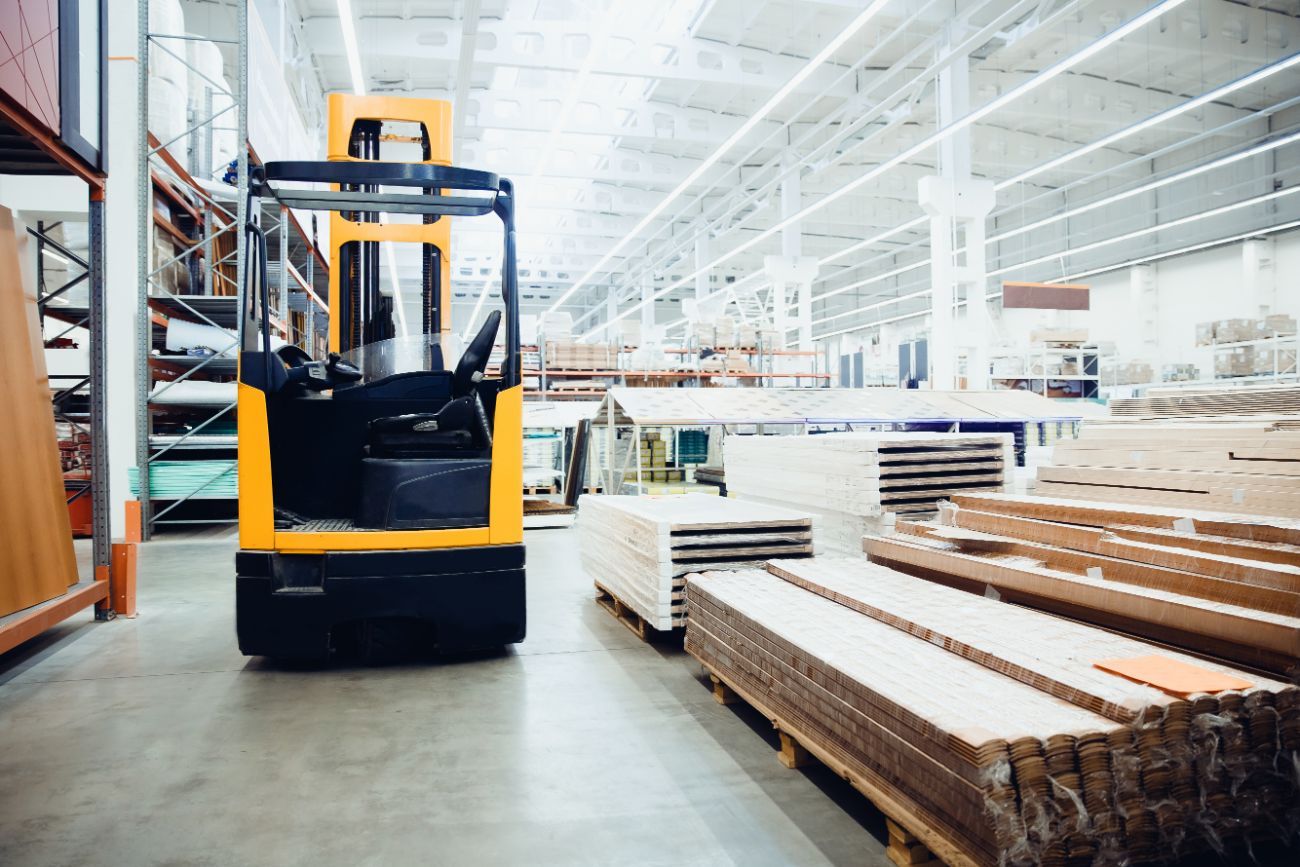When looking for a warehousing partner to manage the storage and handling of your raw materials, you should ensure that they’ll be an asset to your supply chain.
Whether you’re storing food, paper, metals, or other raw components, your supply chain is the most important aspect of your business to keep things running and you want a warehouse partner that can do everything you need them to do.
What is Raw Material Supply Chain Management?
A raw material warehouse focuses on the storage, transportation, distribution, and assembly of raw materials used for a manufacturers’ business. Material logistics is essential for every business, so identifying a warehouse partner that practices proper storage and management techniques is crucial. Storing raw materials requires a specific set of management skills that not every warehouse has.
For example, certain raw ingredients may have individual storage requirements that need to be accommodated and monitored. Having a high-quality materials management partner will keep your ingredients safe from expiration, damage, and theft so you spend little money replacing and fixing products.
Hiring the right raw materials warehouse management partner will increase your efficiency and decrease your operating costs through their systematic and careful handling, moving, packing, and storing techniques. The best raw material warehouses should be able to accommodate products of all different shapes, sizes, and weights. These products may include:
- Raw materials
- Unprocessed materials
- Individual components and ingredients
- Partially finished products
- Finished goods
- Rejected ingredients
- Scraps
- Packing materials
- Supplies

Warehouse Objectives
Effective and efficient material handling relies on the management of all raw materials needed during the manufacturing process. The objectives that these warehouses follow include:
- Lower price of raw materials
- Reduce production cost
- Optimize production process
- Maintain quality raw materials and finished goods
- Good relation with the supplier
- Continuous improvement
- Reduction material damage
- Improve product quality
- Reduce manufacturing time
- Improve control over material flow
- Safe work environment
- Improve productivity and efficiency
- Improved time management and resource usage
- Intuitive facility design
- Principles of Material Handling
Best Practices for Raw Material Handling
Consider warehousing best practices when choosing a warehousing partner to invest your time, money, and resources into. Material handling is a very important task to get right and manufacturers rely on efficient supply chains to meet demands.

These are 4 important factors to consider for when choosing a warehouse to store your materials in.
1. Efficient Layout
A warehouse that is well-designed and organized is more likely to be effective in storing components essential to your business functions. A great warehouse layout reduces waste, storage costs, and ultimately increases productivity tenfold. Here are some design factors that can lead to better warehouse efficiency:
- Streamlined material handling
- Careful supervision of materials
- Reduce and control obsolescence
- Optimized and organized use of space
- Fixed position storage
- Random storage
- Categorized fixed location storage
- Material management
- Designated raw material storage area
2. Diligent Inventory Tracking
Maintaining an accurate, and up-to-date inventory of raw materials is critical to managing a supply chain. Warehouses that focus on raw materials will have inventory management infrastructure in place that will assist them in tracking every component in the warehouse. Balancing inventories regularly will ensure that the manufacturer’s final products come out complete. A warehouse must use sales projections to estimate how many units must be made, which will determine the amount of material needed to build them.
Additionally, ensuring a back up “safety stock” will help mitigate returns, quality issues, and sudden increases in demand. These projections should be calculated based on seasonality, market changes, and other outside factors, rather than predicted. Unfortunately, many smaller businesses struggle with cash flow and resource attribution, so they may find both overstocking and understocking detrimental.
Overstocking Materials
When projections exceed reality, warehouses are faced with overstocked materials. These changes can be due to unit sales slowdown, overly optimistic sales goals, uneducated guesses, and various miscalculations.
Understocking Materials
When projections fall short of reality, warehouses may find themselves with a low-stocked inventory. These issues can be serious and detrimental to the entire supply chain. They can be caused by under-forecasting, transportation issues, and various other supply chain disruptions.
3. Responsible Compliance and Quality Assurance
Quality assurance and traceability are critical factors in efficient supply chain management, but when it comes to raw materials, the stakes can be a bit different. Quality rejections can cause severe shortages in material and costs can rise due to expedited shipping replacements.
Traceability is especially important when shipping certain electronics and auto components out of the country; the receiving country may have regulations that control the import of raw materials. Ensuring the highest level of quality and compliance is important when it comes to smaller businesses, because if their raw materials are not effectively managed, prices and costs may rise, especially if production must be paused.

4. Data-Driven Management
As the modern supply chain has become more globalized and complex, material handling management has become more comprehensive and technologically advanced. Order frequency has become a science as spreadsheets have been replaced with industry-leading software.
Warehouses that have not upgraded their management systems to data-driven, calculation-based software are less likely to effectively store raw materials.
Inconsistent stock levels and estimates will lead to shortages and inventory gaps. Planning software helps optimize the warehousing of raw materials and calculate inventory fluctuations based on historical data, sales projections, and order confirmations. With the right software, raw material warehouses can reduce inventory costs by 25% or more.
This is why keeping a close eye on inventory is the difference between a good warehouse and a great one. This kind of software can manage both orders and forecasting, which allows them to be calculated together to prevent spikes and shortages. Modern software for the raw material warehouse features:
- Advanced analytics
- Planning and forecasting
- Cost reduction
- Material tracking
- Informed ordering
- Sales projections
- Inventory calculations
Store Your Supply Chain Materials Efficiently
Looking for a warehousing solution to handle your raw material inventory for manufacturing? Bridgetown Trucking has everything necessary to join your supply chain as a dependable stepping stone.
Learn how our warehouse facilities are fully equipped to handle your raw material storage and keep your supply chain moving smoothly. Talk with our warehouse team in Portland or St. Louis for a quote today!

